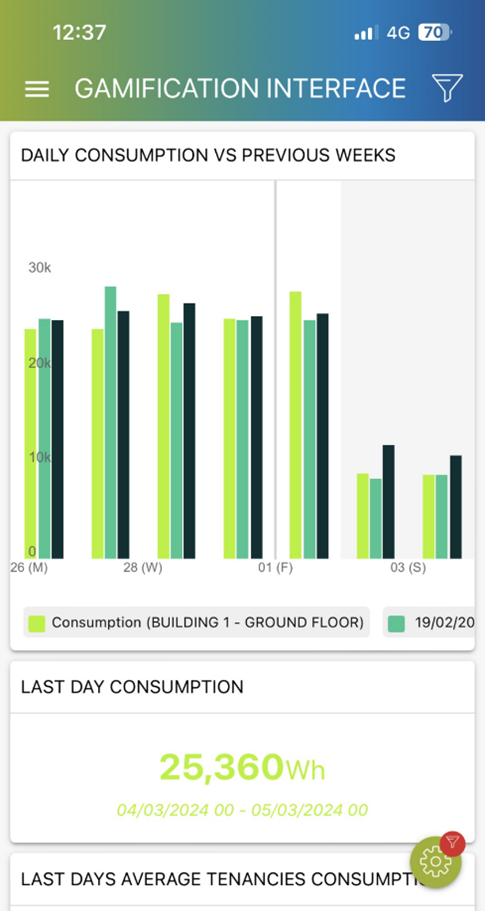The gamification revolution to save energy at commercial buildings
The SmartSPIN project is developing an innovative automated approach that boosts energy savings in commercial buildings. By integrating an advanced data visualization capability for energy management, our solution will not only optimise energy use but also engage customers through a gamified smartphone app, making energy efficiency both accessible and enjoyable.
To identify the most significant energy and cost streams in buildings using minimal dataset of information, Tecnalia has developed data-driven energy diagnostics algorithms.
Figure 1 Early building performance diagnostics web-dashboard. On the left, information required. On the right, output from the information provided.
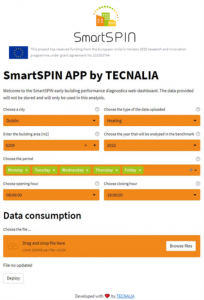 |
 |
The main information of the building considered is the location (i.e., climate), characteristics (i.e., size), usage (opening hours, schedules, etc.), and general HVAC characteristics, as well as overall facility energy consumption. Based on that, the early building diagnostic results in the calculation of key performance metrics that identifies automatically energy saving measures when cross-references against current building performance databases.
Additionally, the second type of algorithms developed within SmartSPIN by Tecnalia are for energy prognosis in the short term that address predictions for the day ahead (i.e., 6, 12 and 24 hours). These predictions are generated taking into account characteristics such as the weather forecast, calendar, current loads and predicted occupancy.
As a result, the two types of algorithms generate recommendations for alternative energy management strategies that surpass the baseline performance, offering improvements to both short-term and long-term control strategies:
- Prognosis algorithms assist in planning and scheduling available energy flexibility to minimise energy cost while ensuring user comfort such as maximising energy use in off-peak electricity time bands.
- Data-driven energy diagnostics algorithms propose and assess measures to enhance energy efficiency and flexibility over a longer period.
Currently, tenants, landlords, facility manager, and ESCOs based in Spain and Greece are using the developed algorithms through the visualisation dashboard. Furthermore, within the Greek demo site, a demand response service has been developed by using the flexible tariff template.
Figure 2 Infographic on demand response service based on Flexible Tariff
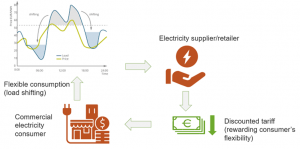
Smarkia has also developed the SmartSPIN app to deploy a gamification strategy aiming to introduce a competitive element impacting the implementation of energy saving opportunities at the different demo sites, and to identify commonalities between the different tenancies.
To achieve tangible results, the Spanish and Greek demo sites have already begun implementing the app. Further results will be presented in the upcoming months.
Figure 3 SmartSPIN Application: gamification interface
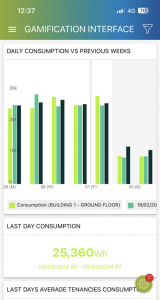 |
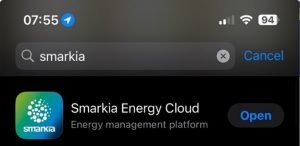 |
